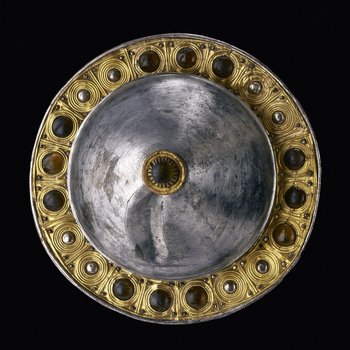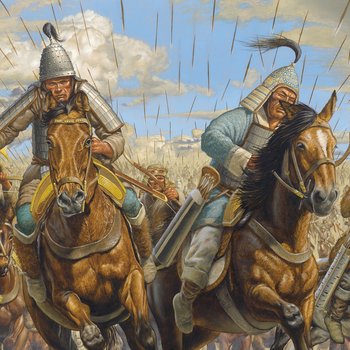Barbarian Potency
Late Antiquity and Migration Period
3rd to 5th century AD
From the 3rd century AD onwards, the balance of power in Europe shifted. The Roman Empire was increasingly weakened by wars and internal political disputes. In the Germanic areas beyond the Limes, on the other hand, the tribes began to band together into large units. The reasons for this are not entirely clear, but potentially diverse: overpopulation, internal conflicts, environmental factors.
In central Germany, a change took place in the middle of the 2nd century AD: The Hermunduri left their ancestral lands east of the Saale in the course of the Marcomannic Wars. Around AD 230, the Juthungi, who were counted by the Romans as belonging to the Semnoni tribe, settled in the area.
Clearer than the causes of the tribal formations is the goal of the new groups: the riches of Rome, which in wars on multiple fronts was increasingly on the defensive. In the course of the centuries, however, there were not only armed conflicts between Germanic tribes and Romans. Some Germani trained in the Roman army and became mercenaries on behalf of Rome. The returnees are recognisable by imported objects in rich burials.
The exhibition takes up this ambiguity with its main installation: a wall that symbolically stands for the border between the 'civilised' and the 'barbarian' world. It separates the Roman world in the form of a recreated villa from the Germanic world, which is represented by the staging of a royal hall.





